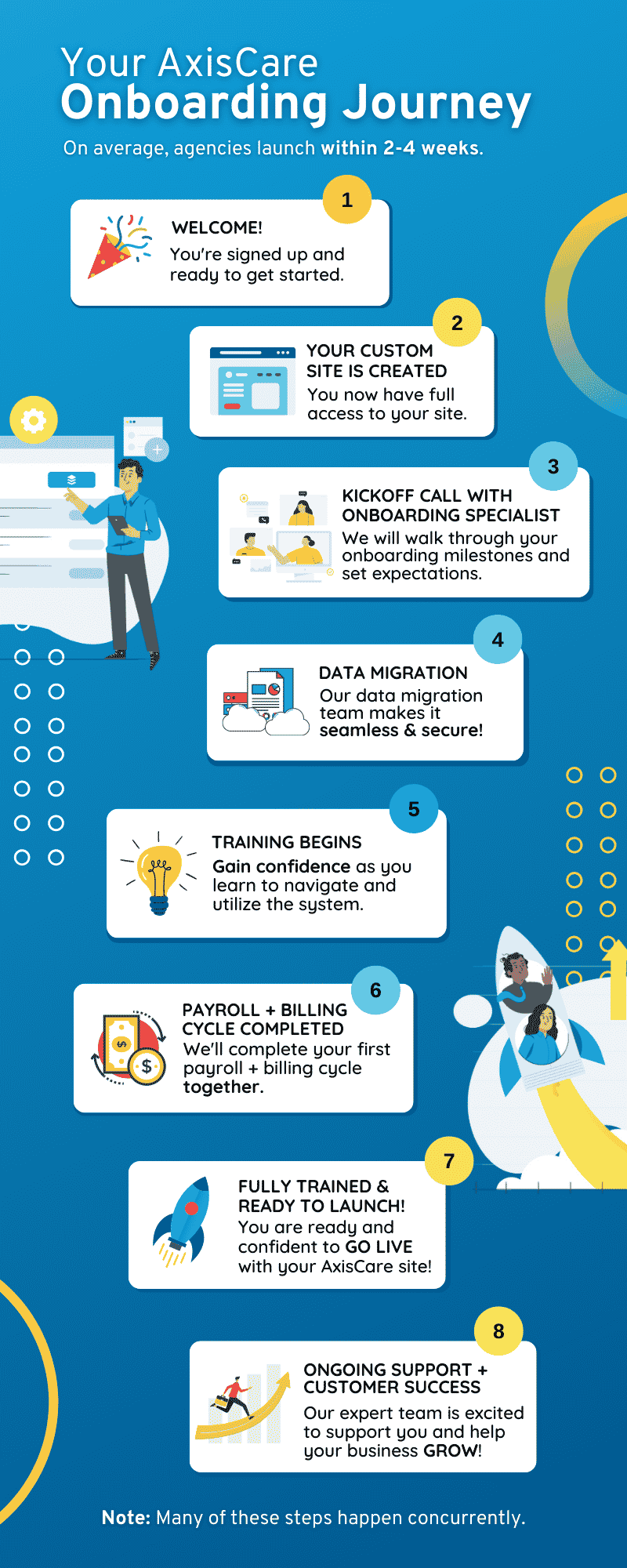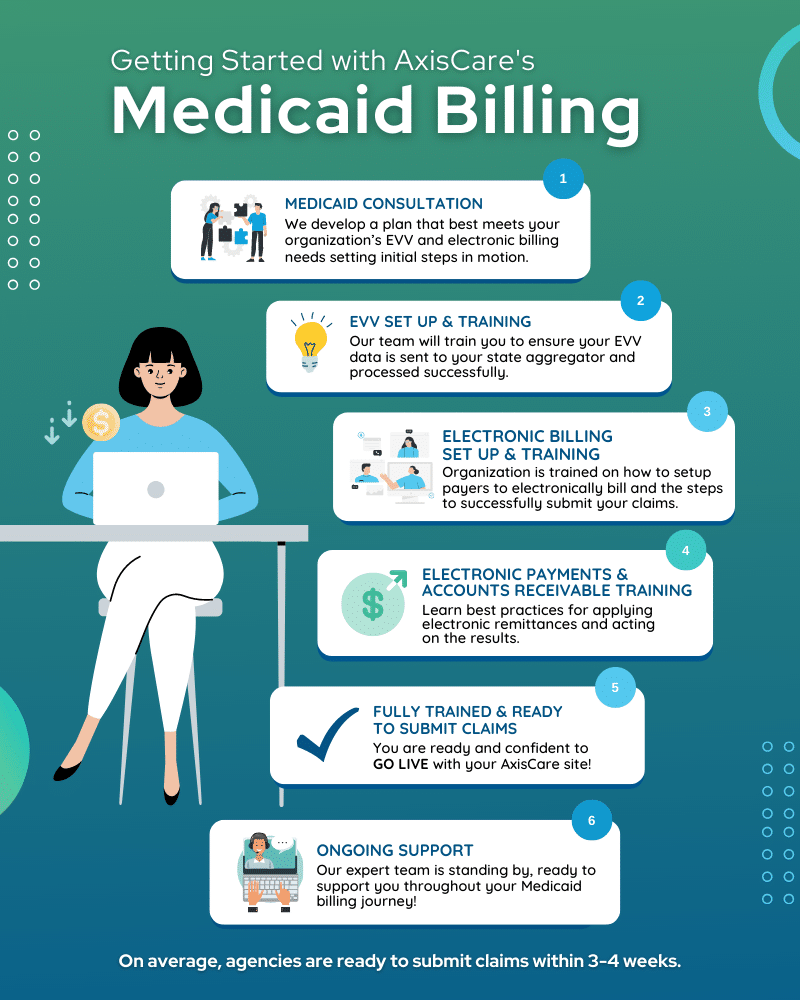Home is where the heart is – and thanks to modern technology, it’s also where the care is. From personal care to skilled nursing, physical therapy, and everyday help around the house, caregivers play a central role in helping older adults age comfortably.
More than three-quarters of this demographic group prefer to age in place, and with the proportion of seniors reaching new highs across the U.S., demand for these services has never been higher. While this is certainly a positive sign for home care agencies, there continue to be significant challenges in home health care that make it difficult to thrive.
Why are Home Healthcare Services Important?
As the years tick by, quality of life becomes increasingly important for older adults. Home care allows them to remain independent while receiving essential services, all in a familiar setting. It also reduces the need to travel to and from the hospital for various appointments, which is especially helpful for those with limited mobility or chronic conditions.
But the benefits of in-home care extend far beyond the individual. These services help address many challenges in home health care while allowing seniors to maintain independence. Each client who receives care at home is one less person requiring hospital or in-clinic resources, which is a welcome relief for a stretched-thin medical system. Moreover, with consistent monitoring (whether remotely or during in-person appointments), caregivers can often detect and resolve issues before they escalate and reduce hospital readmissions.
How do Home Healthcare Agencies Make Money in the U.S.?
Home care agencies’ primary income sources can be boiled down to who they bill for services: namely Medicare, Medicaid, private insurance, and clients who pay out of pocket. Some organizations draw income from multiple sources, while others may focus on a single one.
No matter how varied or homogenous an agency’s income sources may be, most agree that diversification presents significant opportunities for growth. According to a study sponsored by AxisCare and conducted by Leading Home Care … a Tweed Jeffries company, 57% of industry-leading home care agencies view payer source diversification as a key strategy in 2025 and beyond.
Once the billing process is complete, agencies must manage their spending. It doesn’t matter how much you charge if elements like caregiver scheduling, route optimization, and administrative processes breed wasted resources. By refining these processes, agencies can lower their operational expenses and deliver better patient experiences.
It goes without saying that maintaining a strong client base is a must for agencies’ financial prosperity. However, they can’t rest on their laurels; actively soliciting and acquiring new patients is vital to sustained success. A carefully thought-out marketing strategy combined with diverse payer sources and on-the-ground partnerships in local communities contributes to growing and maintaining a healthy patient roster.
What Challenges Will Home Health Care Agencies Face in 2025?
According to the study mentioned above, the most common challenges in healthcare center around staffing, specifically caregiver shortages, recruiting, and retention.
How do Caregiver Shortages Impact Home Healthcare?
Caregiver shortages in home care are shaped by multiple compounding issues. First, as demand for home care increases, so does the need for agencies to build a more robust team. But when it’s time to recruit, they often struggle to find qualified candidates. Caregiving is widely associated with low pay and a high emotional toll, translating to high turnover and a reluctance to enter the career field.
When the supply of caregiving staff can’t meet the market’s demand, agencies must raise their prices, making it more expensive for consumers to age in place. At the same time, the caregivers they do have get stretched progressively thinner, taking on ambitious workloads and risking a backslide in quality of care.
What are Effective Strategies for Caregiver Recruiting?
Detailed job descriptions help attract the right candidates and deter those who wouldn’t be a good fit. This acts as a first line of defense, allowing HR to focus on only the most qualified applicants. Digital recruitment tools like AI-powered screening can also help streamline the process. As new hires transition from onboarding to on-the-ground, a paid trial period allows all parties to assess fit before making a long-term commitment.
Looking within your own workforce is another great way to find qualified leads. Employee referral programs tap your existing staff for recommendations and reward them when their referral remains employed for a period of time. Expanding recruitment efforts into non-traditional job platforms—such as local Facebook groups, LinkedIn, and targeted social media ads—can also reach a wider pool of applicants.
How can Agencies Improve Caregiver Retention?
Caregiving has always been associated with exceptionally high turnover. According to recent data, nearly four out of five caregivers will leave their role within the first 100 days. Agencies must assert themselves as attractive employers, offering competitive salaries and benefits that make it worthwhile for caregivers to stay on board. But compensation is only the tip of the iceberg.
Training and development opportunities empower caregivers to grow in their roles instead of stagnating and looking elsewhere for meaningful work. While the sometimes unusual hours associated with caregiving may not work for some people, they can be a boon for others: not everyone is looking for a 9-to-5 job, so offering flexible scheduling can broaden your candidate pool while giving caregivers more autonomy.
How can Agencies Attract New Clients?
Aside from payer diversification, there are plenty of savvy ways to seek out new clients. For starters, similar to employees referring qualified candidates from their network, satisfied patients can refer agencies to others in their peer group. Agencies can also build relationships with contacts who interact with older adults, including healthcare providers, hospital administrators, and even community organizations hosting seniors’ events.
Maintaining a strong online presence is a key tenet of inbound marketing, sending leads your way who are already interested in your services. From updating your website to engaging with online reviews, show the world you’re active and engaged with your client base.
Improve Your Caregiver Onboarding Process With AxisCare
AxisCare is a purpose-built home care platform designed to streamline every facet of agency management. Book a free live demo to discover how technology can save your business time and money while increasing satisfaction rates among clients and caregivers.









